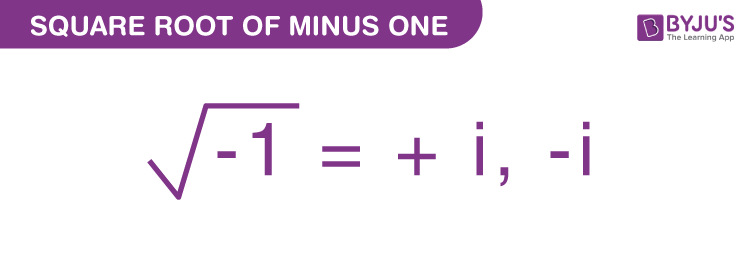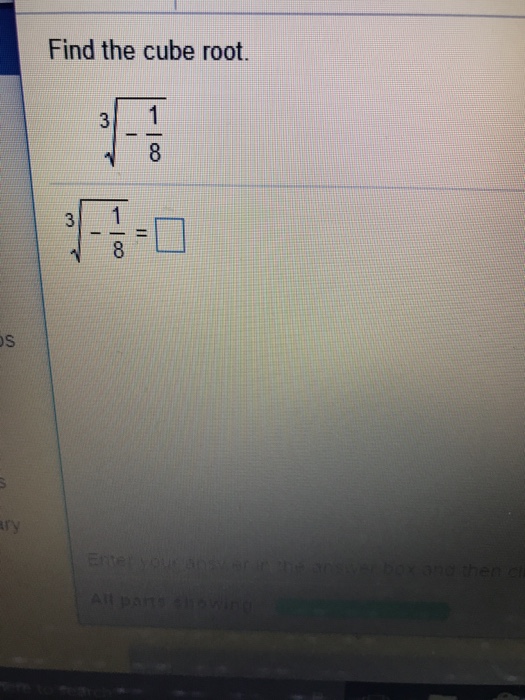Topic square root of a negative 1: Delve into the fascinating world of imaginary numbers as we uncover the enigma behind the square root of a negative 1. Explore the significance of this concept in mathematics and its practical applications in various fields. Join us on a journey to understand the intricacies of complex numbers and their role in shaping our understanding of the universe.
Table of Content
- Understanding the Square Root of a Negative Number
- Table of Contents
- 1. Introduction to Imaginary Numbers
- 2. The Concept of the Imaginary Unit
- 3. Euler's Formula and Complex Exponentials
- 4. Application in Electrical Engineering
- 5. Visualization Techniques for Imaginary Numbers
- 6. Historical Context: Development of Complex Numbers
- YOUTUBE: Hướng dẫn chi tiết cách tìm căn bậc hai của số âm. Video này sẽ giúp bạn hiểu rõ về số ảo và cách sử dụng chúng trong toán học.
Understanding the Square Root of a Negative Number
In mathematics, the square root of a negative number introduces the concept of imaginary numbers, primarily represented by the symbol \( i \), where \( i = \sqrt{-1} \).
Definition and Basic Properties
For any positive real number \( p \), the square root of \(-p\) is given by:
\[
\sqrt{-p} = i \sqrt{p}
\]
This definition is essential in higher-level mathematics where the principal square root is considered.
Examples
- \(\sqrt{-4} = i \sqrt{4} = 2i\)
- \(\sqrt{-9} = i \sqrt{9} = 3i\)
It is conventional to write \(2i\) rather than \(i2\), to avoid misinterpretation.
Complex Solutions
Solving equations involving negative square roots leads to complex solutions. For example, solving \(x^2 + 1 = 0\):
\[
x^2 = -1 \implies x = \pm i
\]
Imaginary Numbers in Various Fields
Imaginary numbers are not just theoretical constructs; they have practical applications in various fields:
- Electrical Engineering: Used to simplify calculations involving alternating current (AC).
- Signal Processing: Employed in Fourier transforms for sound and image processing.
- Quantum Mechanics: Essential in formulating and solving equations.
Historical Context
The concept of square roots has ancient origins. For instance, the Rhind Mathematical Papyrus from ancient Egypt and the Sulba Sutras from ancient India provided methods for extracting square roots.
Visualization
The complex plane is a helpful tool for visualizing complex numbers. Here, the imaginary unit \( i \) is plotted on the vertical axis, while real numbers are on the horizontal axis.
Conclusion
Imaginary numbers, starting with \( i = \sqrt{-1} \), expand the number system beyond real numbers, allowing for solutions to equations that would otherwise have no real solution. They play a crucial role in modern mathematics and engineering.

READ MORE:
Table of Contents
Introduction to Imaginary Numbers
Understanding the Imaginary Unit
Euler's Formula and Complex Exponentials
Applications in Electrical Engineering
Visualization Techniques for Imaginary Numbers
Historical Context: Development of Complex Numbers
1. Introduction to Imaginary Numbers
Imaginary numbers are a vital concept in mathematics, expanding our understanding beyond real numbers. They are denoted by the symbol "i" and represent the square root of -1. Initially perceived as abstract, imaginary numbers have found practical applications in various fields such as electrical engineering, quantum mechanics, and signal processing.
2. The Concept of the Imaginary Unit
The imaginary unit, denoted by "i," is a fundamental element in the realm of complex numbers. It represents the square root of -1, a concept initially deemed paradoxical but later embraced for its profound implications. The imaginary unit extends the number system beyond real numbers, enabling mathematicians to solve equations that were previously unsolvable.
3. Euler's Formula and Complex Exponentials
Euler's formula, e^(iθ) = cos(θ) + i*sin(θ), is a cornerstone in the study of complex numbers. It beautifully connects the trigonometric functions cosine and sine with the exponential function, providing a concise representation of complex numbers in the polar form. This formula is indispensable in various branches of mathematics, physics, and engineering.

4. Application in Electrical Engineering
The square root of -1, represented by "i," plays a crucial role in electrical engineering, particularly in the analysis of alternating current (AC) circuits. Complex numbers, involving "i," are used to represent impedance, voltage, and current in AC circuits. This application enables engineers to efficiently analyze and design electrical systems, contributing to advancements in technology and innovation.
5. Visualization Techniques for Imaginary Numbers
Visualizing imaginary numbers can be challenging due to their abstract nature, but several techniques aid in understanding their properties geometrically. One such method involves representing complex numbers on the complex plane, where the real part is plotted on the x-axis and the imaginary part on the y-axis. This visualization facilitates comprehension of complex arithmetic operations and geometric interpretations.
6. Historical Context: Development of Complex Numbers
The concept of complex numbers, including the square root of negative one, has a rich and intriguing history that spans several centuries and involves many brilliant mathematicians.
The origins of complex numbers can be traced back to the 16th century with the work of Gerolamo Cardano, an Italian mathematician who encountered the square root of negative numbers while solving cubic equations. Although he considered these solutions "as subtle as they are useless," his work laid the foundation for future developments.
In the late 16th century, Rafael Bombelli made significant progress by establishing rules for operations involving the square root of negative numbers, which he described in his book L'Algebra. Bombelli's rules were essential in manipulating complex numbers, although the concept was still met with skepticism.
The 17th century saw further advancements with mathematicians like René Descartes, who coined the term "imaginary" to describe these numbers, and John Wallis, who provided a geometric interpretation of complex roots of quadratic equations.
In the 18th century, Leonhard Euler standardized the notation i for the square root of -1 and linked complex numbers with exponential and trigonometric functions through his famous formula: \( e^{i\theta} = \cos(\theta) + i\sin(\theta) \). This period also saw Caspar Wessel and Jean-Robert Argand develop the modern geometric representation of complex numbers as points or vectors in the complex plane.
Carl Friedrich Gauss, in the early 19th century, provided rigorous proofs and applications of complex numbers, including his proof of the Fundamental Theorem of Algebra, which states that every non-constant polynomial equation has a solution in the complex numbers. Gauss's work greatly enhanced the acceptance and understanding of complex numbers in the mathematical community.
Despite these advancements, the acceptance of complex numbers was not universal. Mathematicians like Augustus De Morgan were still skeptical of their practical use. However, over time, the utility of complex numbers in various fields, particularly in engineering and physics, solidified their importance and legitimacy in mathematics.
Today, complex numbers are a fundamental part of mathematics, with applications ranging from electrical engineering to quantum physics, demonstrating the profound impact of this once "imaginary" concept.
Hướng dẫn chi tiết cách tìm căn bậc hai của số âm. Video này sẽ giúp bạn hiểu rõ về số ảo và cách sử dụng chúng trong toán học.
Làm Thế Nào Để Tìm Căn Bậc Hai Của Số Âm
READ MORE:
Video này giải thích chi tiết về căn bậc hai của số âm một, khái niệm số ảo và cách áp dụng trong toán học.
Căn Bậc Hai Của Số Âm Một














